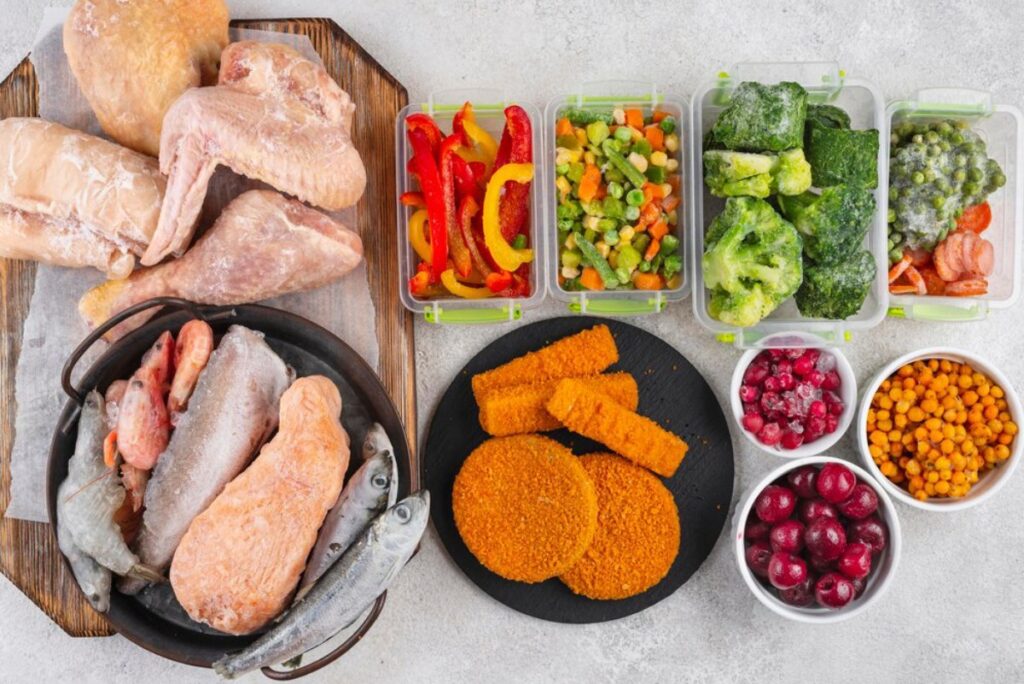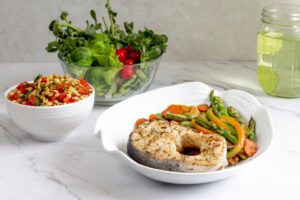The Health & Wellness Blog

How to Identify Inflammatory Foods
Not all inflammation is bad. It is your body’s response to injury, infection or stress. Health problems can arise from chronic inflammation. Joint pain, fatigue, heart disease and autoimmune disorders are among them. Genetics and lifestyle are important, but diet is key.
You may be doing this instead of not doing it at all as many commonly consumed foods can unknowingly be triggering inflammation. Sneaky sugars in snacks and refined oils in “healthy” takeout can affect your health over time. The good news? Learn to read labels. This way, you’ll find foods that can be inflammatory. You’ll eat better without restrictive diets.
This guide will help you cut through the confusion.
Which Foods Are Inflammatory and What You Need to Know
It can help if you have food sensitivities, want to ease pain, or just want to feel better.
Understanding the Core
Inflammation is the body’s natural way to respond to injury or infection. But chronic inflammation can lead to serious health issues. Many foods we eat daily can worsen this condition, causing fatigue, joint pain, skin problems, and severe issues like heart disease and diabetes.
Recognizing and removing inflammatory foods is crucial for long-term health. Unlike fad diets, this approach is about understanding what you eat and how it affects you. This guide will help you identify these foods, reduce inflammation, and improve your well-being.
Quick Guide
Before diving deeper, here’s a quick look at common inflammatory food types to watch out for:
- Refined sugars and sweeteners: white sugar, high-fructose corn syrup
- Refined carbs: white bread, pastries, and most packaged snacks
- Trans fats: found in margarine, some baked goods, and fast food
- Highly processed foods: with long ingredient lists or artificial additives
- Excess omega-6 fatty acids: from vegetable oils like corn, soybean, and sunflower oils
- Red and processed meats, such as sausages, hot dogs, and bacon
- Alcohol in excess: More than moderate consumption can harm gut health
- Dairy (for some people): especially conventional, hormone-treated dairy
These foods may affect everyone differently, so knowing your body’s reactions is key.

Step-by-Step Guide
1. Read Ingredient Labels Carefully
Many inflammatory foods hide in “healthy” granola bars, cereals, or salad dressings. The rule is simple: fewer ingredients are better.
Watch for:
- Hydrogenated oils
- High-fructose corn syrup
- Monosodium glutamate (MSG)
- Artificial sweeteners like aspartame or sucralose
- Preservatives like BHA/BHT
- Artificial dyes or flavours
Pro Tip: If a product has more than five unfamiliar ingredients or ones you can’t pronounce, it likely has inflammatory additives. Stick with whole or minimally processed options.
2. Identify Blood Sugar Spikers
Rapid blood sugar spikes cause your body to release inflammatory compounds. These usually follow refined carbs and sugary snacks.
Common culprits include:
- White rice
- Breakfast cereals
- Soda and sweetened drinks
- Candy and desserts
Choose whole grains like oats, quinoa, and brown rice. They digest slowly and help balance blood sugar.
3. Pay Attention to Cooking Oils
Many oils have high omega-6 fatty acids, which can promote inflammation.
Inflammatory oils to avoid:
- Corn oil
- Soybean oil
- Cottonseed oil
- Canola oil
Anti-inflammatory alternatives:
- Extra virgin olive oil
- Avocado oil
- Cold-pressed flaxseed oil
Important Tip: Check the oil used in packaged foods and restaurant meals. These often use cheap vegetable oils unless stated otherwise.
4. Observe How You Feel After Eating
Everyone reacts differently to foods. Keep a food journal for a few weeks. Note what you eat and how you feel afterwards. Symptoms like bloating, fatigue, mood swings, or joint pain may indicate inflammation triggers.
Pro Tip: Elimination diets can help. Remove suspected inflammatory foods for two to three weeks, then reintroduce them one at a time to see your body’s response.
5. Recognise Sneaky Sugar Sources
Even “natural” or “healthy” foods can hide a lot of sugar. Sauces, marinades, and yoghurts can be major offenders.
Hidden sugar names include:
- Dextrose
- Maltose
- Agave nectar
- Brown rice syrup
- Cane juice
Aim for no more than 6 teaspoons (25 grams) of added sugar per day for women and 9 teaspoons (38 grams) for men, according to WHO guidelines.

6. Monitor Dairy and Gluten Sensitivity
Dairy and gluten may not be inflammatory for everyone, but they can worsen inflammation for some, especially those with conditions like IBS or autoimmune disorders.
If symptoms persist after avoiding common inflammatory foods, consider testing your reaction to:
- Cow’s milk, cheese, and yogurt
- Wheat-based products like pasta, bread, and crackers
Pro Tip: Choose fermented dairy like kefir or yogurt with live cultures. They may be better tolerated and offer probiotic benefits.
Important Notes
- Inflammation builds over time. A sugary drink or fast food meal won’t cause immediate harm, but consistent consumption can add up.
- Inflammatory foods can affect gut health, which in turn impacts immune function and mental clarity. A compromised gut can lead to “leaky gut,” allowing toxins to circulate and increase inflammation.
- Food quality matters. Even healthy-sounding foods can cause inflammation if poorly raised or processed. Choose grass-fed, wild-caught, and organic products when possible.
Best Practices and Additional Insights
- Prioritise homemade meals: This lets you control ingredients and cooking methods.
- Focus on balance, not restriction: Instead of cutting foods, fill your plate with anti-inflammatory options like leafy greens, berries, legumes, and healthy fats.
- Hydrate well: Water helps flush toxins and supports cell repair. Inflammation thrives in dehydration.
- Use herbs and spices: Turmeric, ginger, cinnamon, garlic, and rosemary have strong anti-inflammatory properties and enhance meal flavours.
Pro Tip: Combine turmeric with black pepper to improve curcumin absorption by up to 2,000%. Add both to soups, stir-fries, or smoothies for a powerful anti-inflammatory effect.

FAQs
What are the top three most inflammatory foods?
Refined sugars, trans fats, and processed meats are known to be highly inflammatory.
Is gluten always inflammatory?
Not for everyone. Gluten mainly concerns those with sensitivities or autoimmune conditions. Whole grains with gluten can be part of a healthy diet for others.
Can fruit cause inflammation due to its sugar content?
Whole fruits have natural sugars but also provide fibre, vitamins, and antioxidants. They are generally anti-inflammatory when eaten in moderation.
How do I know if a food is inflammatory for me?
Track your symptoms. Food journaling and short-term elimination diets can help you find individual triggers.
Are plant-based meats inflammatory?
Some are highly processed and may have additives that are inflammatory. Choose minimally processed versions with recognisable ingredients or whole-food plant proteins like lentils or tofu.
Awareness Is Your Best Ally
It’s not about classifying foods as “good” or “bad.” It’s about awareness. The more you learn about reading labels, tracking how foods impact you, and selecting whole, nourishing foods, the more you can minimise inflammation. Remember, consistency is key. Making small, gradual changes in your food choices can lead to persistent relief and increased vitality. Just make one informed choice each time—and watch your health change rapidly.









